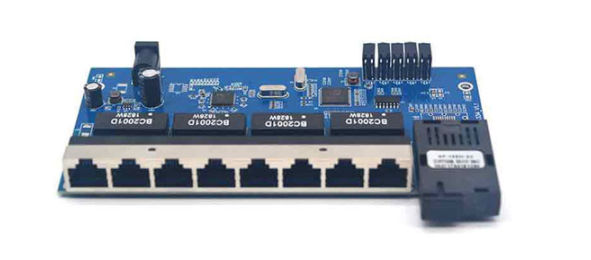Question: Can the bare PCB board be taken out of the oven immediately after being dried at 150 degree Celsius?
Answer: No! It must be cooled slowly, and it can be taken out after the temperature drops below 60°C! This is because PCB is baked at high temperature, especially after the baking temperature approaches or exceeds the glass transition temperature (Tg) of the substrate, the resin in the substrate is in a highly soft and elastic state. At this time, if rapid cooling is used, Between the epoxy glass cloth insulating substrates with and without copper foil circuits (or inner circuit of the board core), the cooling rate experienced will have a big difference. This difference in cooling speed will cause the resin that has been softened during the baking process to be inconsistent with the cooling and hardening speed of the part with and without copper foil, thereby forming local stress. The greater the temperature difference between the oven temperature and the room temperature when the board is taken, the greater the stress caused by the difference in cooling speed, and the more serious the consequences of board surface warping!
To talk about an example, there was once a PCB company. After the production department used a temperature condition of 150°C for the PCB boards that had been stored for an extended period of time, some of the boards were warped. When analyzing the reasons, there was a disagreement with the factory inspection.

I suggest that they take stocks of the same board type, board thickness, similar size and storage conditions and time, and again use the temperature of 150 degree Celsius for pre-welding moisture drying board treatment, and then immediately take it out of the oven and place it in the oven. The room temperature is about 27 degree Celsius or so on the platform. After the board is completely cooled, the board warping failure can be reproduced.
In the previous article, we briefly stated that the exhaust of PCB needs to use a stepwise slow temperature increase (gradient temperature increase), rather than a rapid temperature increase. This is not only to comply with the release characteristics of epoxy resin to water molecules, but more importantly, to avoid PCB warpage caused by rapid heating. Similarly, after the drying plate is exhausted, the temperature of the board must be reduced slowly (gradient cooling) to avoid "quick cooling" forming local stress inside the PCB substrate, which will cause the board to warp.
As far as removing moisture is concerned, we do not advocate raising the temperature of the baking sheet to the glass transition temperature (Tg) of the substrate or above 125°C, unless it is necessary to remove the residual stress in the board during the process of removing the moisture.
Generally, the temperature of the stress relief baking sheet must be raised to the Tg temperature of the substrate (such as epoxy glass cloth laminate) plus 20°C or more, and the gradient heating (with a constant temperature platform) and slope (°C/min) must be strictly implemented ) Operational specifications for cooling (no need to set a constant temperature platform). If the board has slight warpage and needs to be leveled during the stress-relieving drying process, the board must also be placed flat and pressed, or pressed with clamping tools. Obviously, the "stress-relief" drying board also completes the "moisture removal" drying board at the same time.
Usually, we call the printed board substrate with Tg≤130 degree Celsius as low Tg board; we call the printed board substrate with Tg=150 degree Celsius±20 degree Celsius as medium Tg board; the printed board substrate with Tg≥170 degree Celsius The material is called high Tg board.
Regardless of the type of printed board with Tg value, below its Tg temperature, since the base epoxy resin always maintains a hard and rigid state, the probability of forming local internal stresses during cooling is very low, and the board warps The odds are very low.
High Tg boards not only have low water absorption, but also have low thermal expansion and contraction rate (CTE). This is why high-density printed boards (HDI) such as mobile phone boards, and printed boards for chip packaging (COB) should use high-Tg substrates, and high-Tg boards are rarely needed to remove moisture before welding. one. Of course, due to the short production cycle of mobile phones, under normal circumstances, the PCB board from the factory to the completion of welding, most of them are within tens of hours, and the possibility of "moisture absorption" is almost negligible.